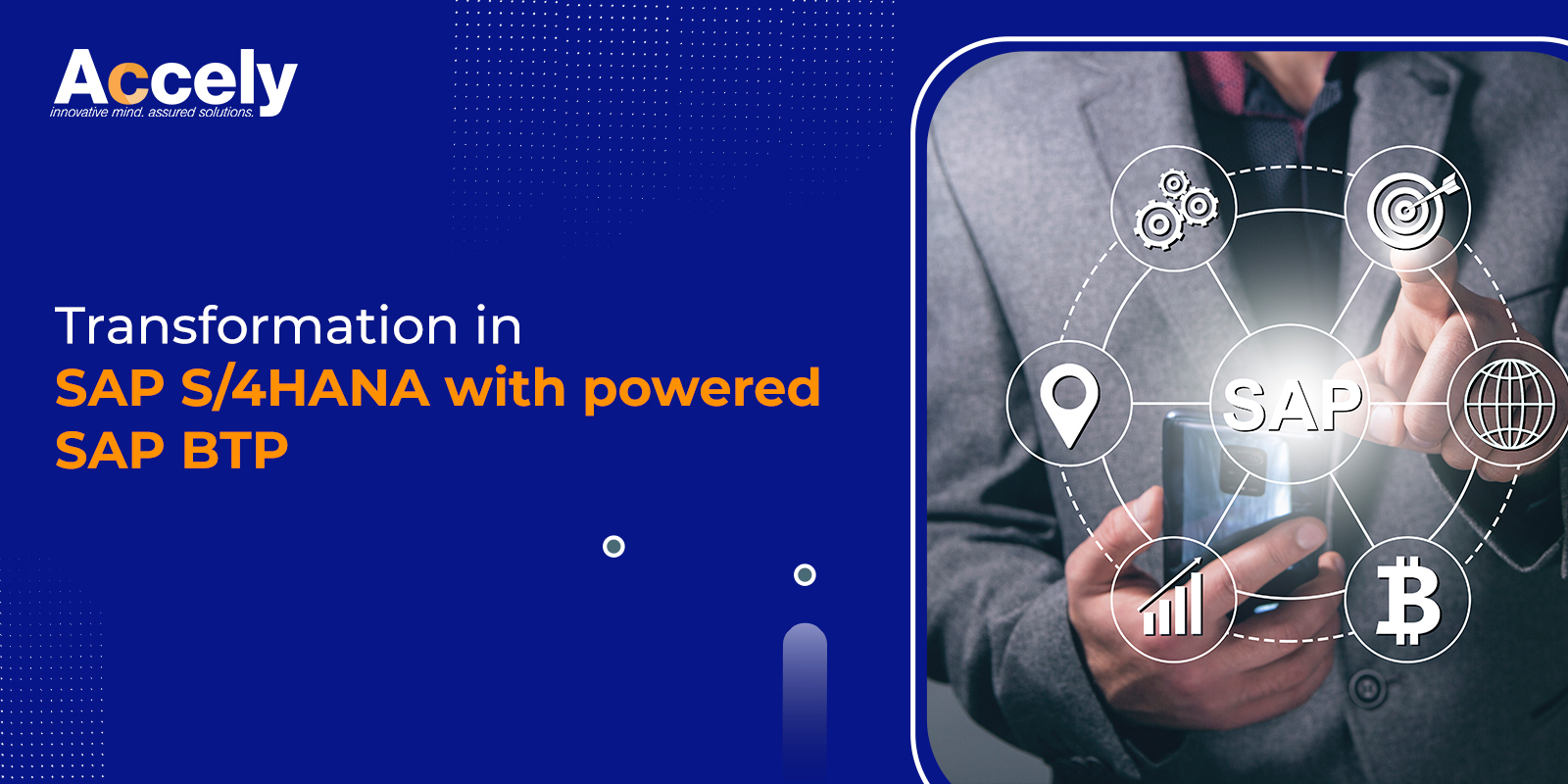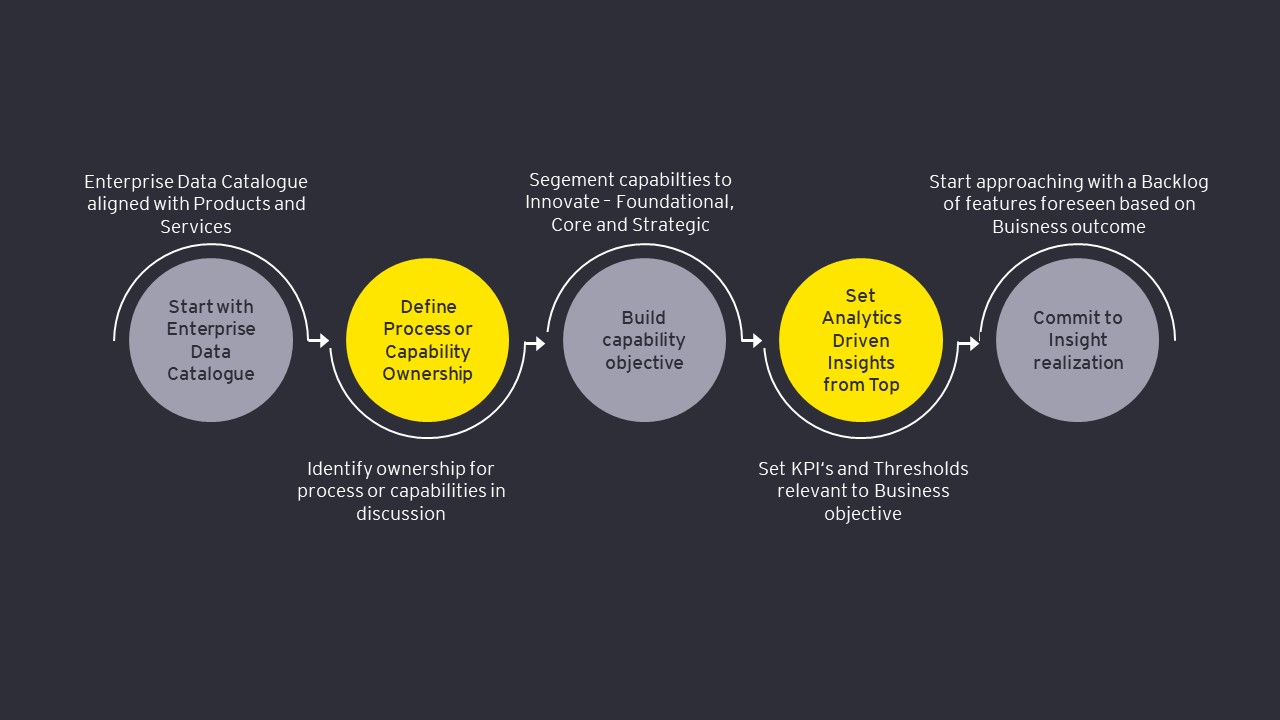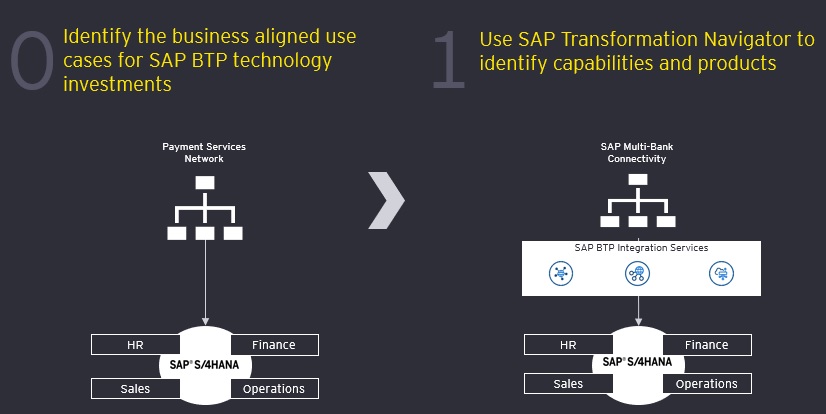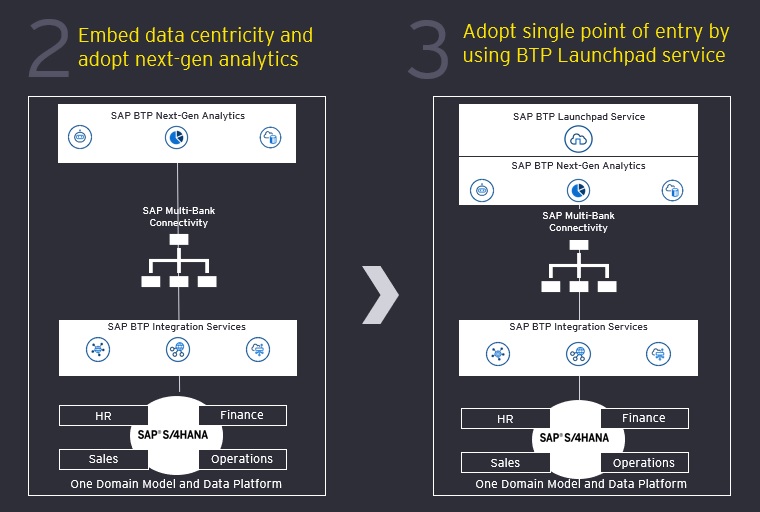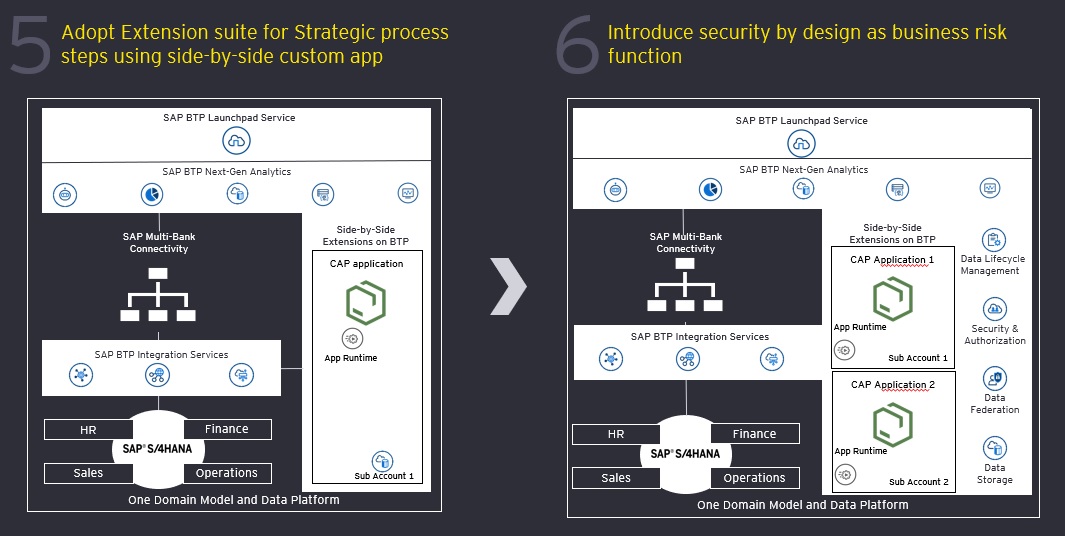Transformation in SAP S/4HANA with powered SAP BTP
10-Jan-2023SAP Business Technology Platform is the new preferred location for extending, developing, and scaling features for modern-day organizations. They’re no longer looking for in-house solutions but options that can provide them with reliable connectivity over the cloud.
Interestingly, this is where SAP enters as a reliable suite of features that streamline business processes, including SAP S/4HANA, among other solutions. However, given its new approach, most businesses need clarification with the approach to simplify operations using the SAP modules.
This blog article offers a brief overview of how to implement SAP Business Technology Platform and other SaaS products from SAP to help your organization’s transformation.
But first, let’s understand how SAP provides accessibility to the users in the following section:
SAP S/4HANA: Boon to the Enterprises
Consultants, developers, product owners, and solution owners frequently obtain knowledge of software products and services from various sources. They utilize it to fit the capabilities of the enterprise, and depending on the results; they incorporate it into the transformation implementation roadmap.
Here, SAP offers the SAP Transformation Navigator as a starting point to:
- Determine appropriate goods and services depending on sectors or lines of business
- Availability of high-level linked items and capabilities (current and future)
- Option for the deployment of the relevant Products and Services using the SAP Product Portfolio to validate which SAP clients have already licensed
So now that we have an idea of how SAP and its different modules can realign businesses let’s look at the insights of the solution in the following sections.
Interestingly, that’s not all. Here’s an overview of the different perks associated with SAP S/4HANA:
Perks of SAP S/4HANA
It Is Easier To Update Business Modules
SAP ECC was created for business models that have yet to adapt as quickly as they do now to keep up with various factors, such as cutting-edge technology, rising consumer demands, supply chain disruptions, and hybrid workforces.
According to the SAP practice lead, firms may shift model changes more readily with SAP S/4HANA due to enhanced capabilities to use data and pivot to new business models. Built from the ground up, SAP S/4HANA considers how businesses operate today.
Efficiency In Finance & Accounts
Initially, companies were used to working in segregated departments that needed manual, time-consuming consolidation after each financial period before the deployment of S/4HANA. Additionally, a third-party reporting tool, or Microsoft Excel, was frequently used to enhance the reporting functions carried out by the older ERP systems.
With SAP S/4HANA, customers can consolidate their whole accounting and finance process using S/4HANA. One customer, for instance, switched from 11 separate instances of their historical system to a single example of the global general ledger. Additionally, customers were able to democratize reporting so that users could create custom reports on their own without relying on IT.
Better Planning
Planning was fragmented across departments and migrated between Excel and the traditional ERP software with the previous systems that customers had used. Additionally, some businesses had to halt work while the planning system ran since it took several hours to finish. This wasted time and reduced output. Once SAP S/4HANA was live, users could complete a planning cycle in minutes rather than hours without halting production.
Organizations may avoid planning in silos and coordinate operational strategies amongst departments since their data are centrally located. Businesses gained access over their whole business, eliminating the need for each product line to have its pricing and inventory strategy. Due to integrated inventory, companies profited from improved logistics and price.
Reduced IT Costs
IT was a big cost center for businesses using outdated ERP software. Each year, a significant amount of time and resources were needed to maintain the current adaptations to their solutions and create extensions. Customers that converted their systems to S/4HANA did away with numerous modifications and frequently outsourced the majority of the upkeep and administration of their environments.
This saved time that could be used for tasks that added more value. In-house developers may also create apps for their customers more rapidly using the SAP Fiori user experience, enhancing the benefit end-users can derive from the additional capabilities.
High-Level Framework Of BTP Adoption
As a business enhancing module, SAP re-defines operations in three primary ways:
- Prepare
- Adopt
- Manage
Prepare:
The requirements to undertake a change at your organization are defined during the preparation stage. The advice at this point is to begin the adoption business-wide or by using already-existing enterprise assets or organizational ownership. In addition, it aids in boosting the rate of SAP BTP services adoption.
Source: https://blogs.sap.com/
Adopt:
Adopt a business technology platform in addition to SAP S/4HANA to accomplish organizational objectives using well-known technical concepts like adopting SAP Standard, Extending for Strategic Benefits, and Keeping the Core Clean. There are three typical methods for implementing SAP BTP cloud services.
- Subscribing a SaaS service
- Shift & Lift
- Extend & Innovate
In a project where the present ECC system would be swapped with SAP S/4HANA, a product owner and SAP consultant are faced with a dilemma. The goal of the greenfield project is to implement SAP standards and maintain a tidy core.
Let’s discuss a hypothetical use case and review the abovementioned strategy for gradually implementing SAP BTP Cloud Services. First, consider an Enterprise that connects to a Payment Service Provider using the existing ECC landscape.
Enterprises would engage in extensive contractual discussions, create unique middleware interfaces, and coordinate file formats with third parties to make the technological link function.
Let’s now modify the present configuration using this business case:
Step 1: Recognize the need and pinpoint the service or item.
The current objectives are to implement standards and maintain a clean core. Next, we locate SAP’s list of product capabilities. Here, we map out the lifecycle using SAP Transformation Navigator and keep it up throughout the transformation process. Because it automates manually, prone to mistake stages with payment execution and reconciliation, the SAP Multi-Bank Connectivity service should be considered the best option.
Source: https://blogs.sap.com/
Step 2: Focus on UX while employing cloud technology to handle real-time access to business analytics.
The Multi-Bank Connectivity significantly enhances and simplifies the company’s treasury operations by automatically updating payment status, and cash positions in the SAP S/4HANA system as updates are received from the banks.
You can engage with your banks or payment service providers to lower the cost of a payment process over time. Using Next-Gen Analytics developed over BTP, data on business and operational efficiency in processing payments is now available.
A single-user interface built on SAP BTP Fiori Launchpad services delivers these details and relevant data through various services.
Source: https://blogs.sap.com/
Step 3: Adopt the SAP BTP Extension package and incorporate the Business Risk feature of Security by Design.
A customized app to monitor if SAP Multi-Bank Connectivity has delivered custom message-issued outgoing (payment) messages to the bank.
Data flowing between your apps and services are protected by default, thanks to the security architecture provided by BTP! Due to security by design, you don’t need to consider governance-related security issues.
Source: https://blogs.sap.com/
Manage
Business users want consumer-grade experiences like web applications and mobile apps, among additional data, to be ready to deliver on SAP BTP and S/4 HANA.
Additionally, you must have redefined team structure with a more integrated purpose to organize as self-empowered agile teams utilizing the DevOps technique to Build>Run>Scale.
In Conclusion
This brings us to the end of our blog, presenting the different aspects of investing in SAP HANA Migration. Remember, there are multiple aspects of moving to the SAP platform. However, the different aspects of the platform can confuse you, so it’s always wise to trust your SAP Implementation Partner.

